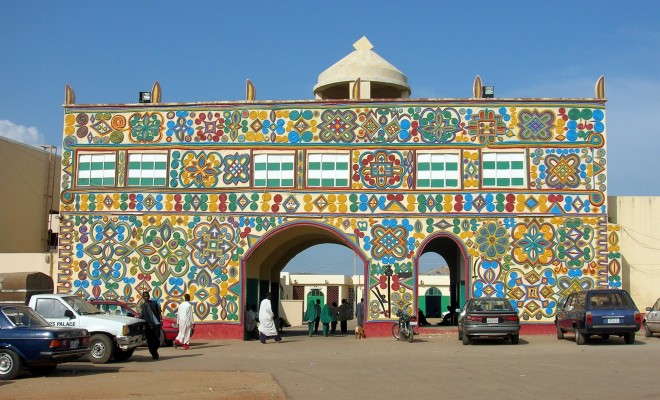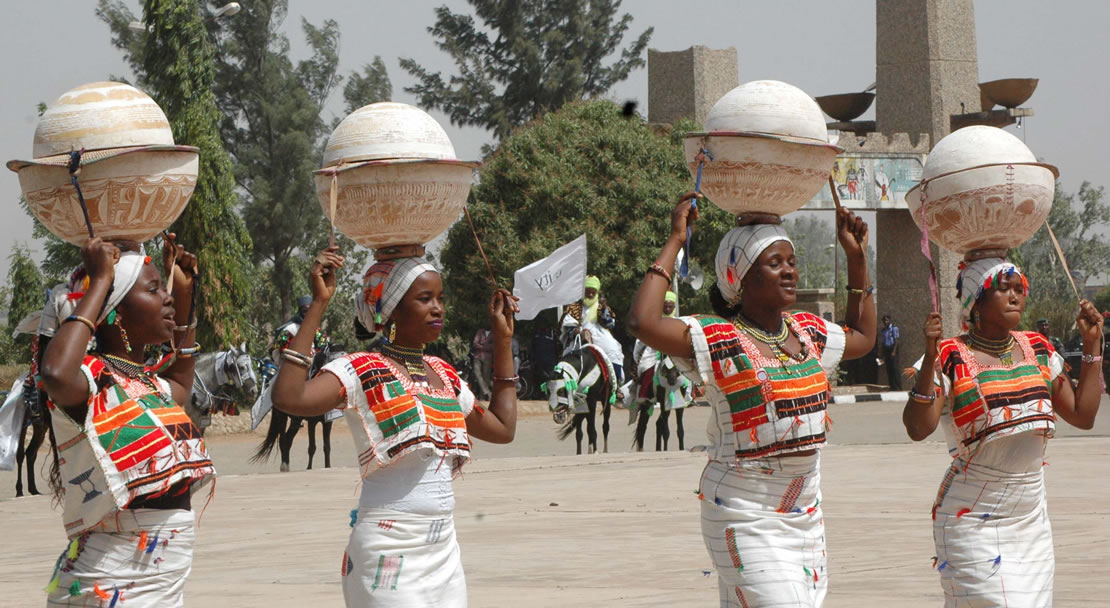
History
Until the late eighties when Kaduna State seemed to have slid into intermittent sectarian and ethnic violence, its capital city, Kaduna, was one of the most peaceful, cosmopolitan and politically important cities in Nigeria. These crises have, however, merely diminished rather than eliminated the city’s virtues, thanks largely to the effective measures the authorities in the state adopted from 2000, the year of the worst crisis, to curb the hostilities in the state.Established in 1912 by Lord Frederick Lugard, first as a garrison town and then as the regional capital of the then Northern Protectorate, Kaduna soon attracted people of all races, religions and cultures. Within two decades of its establishment, it grew from an almost virgin territory of small scattered settlements of the indigenous population, mostly the Gbagyi, to a town of over 30,000 people. This population comprised the British colonizers, artisans from other West African British colonies, artisans and clerks from the Southern Protectorate as well as labourers and traders from the Hausa, Nupe, Kanuri, Fulani and other tribes in the Northern Protectorate.
By 1963 the town had about 250,000 residents and nearly 30 years later, the 1991 census put its population at 1,307,311, a little over a third of the population of the entire state.
Kaduna’s history reflects that of the North in particular and Nigeria in general. This history dates back before 1912, the year Lord Lugard chose it to become the dual capital of the North and Nigeria. The road to Kaduna actually started in 1900 when Lord Lugard was first appointed the High Commissioner of the Northern Protectorate. At that time Lokoja, at the confluence of the mighty rivers Niger and Benue, was the centre of British missionary activities and British trade. It was also the headquarters for its wars of occupation of the North.
Lugard first settled in Lokoja as regional capital to continue with the colonial conquest of the region. Two years later, i.e in 1902, he moved the capital from Lokoja further upstream of River Niger, to Jebba. However, Jebba remained the headquarters for only a few months. Towards the end of the year, he moved even further upstream to Zungeru with the intention of making it the permanent capital of the North. Many Nigerians will remember Zungeru, a major railway town, as the birth place of Nigeria’s foremost nationalist and first president, Dr. Nnamdi Azikiwe. His father had worked there as a railway staff.
For a while it seemed as if Zungeru had succeeded where Lokoja and Jebba had failed; it remained the regional capital for 10 years. However, with time, Lord Lugard himself began to doubt the wisdom of his choice especially given the vastness of the North which had been “pacified” by 1906. He then began a search for a more central and more accessible location than Zungeru.
His search finally ended at a location on the Zaria plains, roughly in the middle of the region. Not only was Kaduna centrally located and much more accessible than Zungeru, the Zaria plains in which it was located were well served by two major tributaries of River Niger, River Kaduna, which gave the settlement its name, and River Gurara. River Kaduna itself was so called because it was crocodile infested, kadduna being the plural of ‘crocodile’ in Hausa.
Apart from its centrality, accessibility and abundant water supply, the location also possessed a clement environment. Also, following the not-too-happy relationship of the colonialists with the large indigenous population of Lagos as capital of the Lagos Colony and Calabar as capital of the Southern Protectorate, the British considered the virginity of a location an important consideration in their choice of a capital. Kaduna, with its sparse and scattered settlement of the indigenous population, satisfied this criterion.
No sooner had Lord Lugard settled down in Kaduna as regional capital in 1912, than he began to plan for it as Nigeria’s capital, ahead of the amalgamation of the Northern and Southern Protectorates in 1914. This followed his promotion that same year as Governor-General of the amalgamated Nigeria. As Governor-General, he did not hide his antipathy towards Lagos and recommended that the capital be moved to Kaduna as quickly as possible. “Government House, Lagos,” he wrote in one of his papers, “would make an excellent hotel if the transfer to Kaduna was achieved.”
The transfer was never achieved. First, the Colonial Office in London thought Kaduna was too far inland for quick and effective communication between motherland and colony. Second, in 1919, Lord Lugard was succeeded as Governor-General by Lord Clifford, who did not share Lugard’s loathing for Lagos. In any case, such a transfer was considered too expensive an exercise by the British.
And so it was that Lugard could not fulfill his wish to see Kaduna become the capital of both the North and Nigeria. However, as the capital of the biggest region in the country – at 730,885 square meters the North was more than three times the size of the Western and Eastern Regions combined. It was also the most populous – Kaduna City was to assume an unmatched political importance in the country, not least because it became the headquarters of the Northern Peoples’ Congress. The NPC eventually became the ruling political party in the North and the senior partner in a coalition government at the centre up to the first military coup in January 1966.
The political status of Kaduna before independence rose a notch higher when a group of Western-educated Northerners led by the late Dr. R.A.B. (Russel Aliyu Barau) Dikko, the region’s first medical doctor, founded the Jam’iyyan Mutanen Arewa A Yau (Association of Northerners Today), in 1948 in the city, ostensibly as a cultural association. The JMA transformed into a political party in October 1951 and subsequently chose Sir Ahmadu Bello to lead it. It held its first convention in Kaduna in July 1952.
The most important symbol of the city’s political importance was and remains the Lugard Hall Complex, named after Lord Lugard. Located at the heart of Kaduna and painted in the national colours of green and white, the complex with its prominent dome sits on a large expanse of land that forms a huge roundabout bound almost right round by Coronation Crescent and by the northern end of the broad Independence Way on its southern entrance. It served as the regional House of Assembly and House of Chiefs during the First Republic. Today it serves as Kaduna State’s House of Assembly.
In addition to being the political capital of the North, Kaduna soon developed into a pre-eminent center of media ( Broadcasting Company of Northern Nigeria, New Nigerian and the defunct Today, Hotline, Democrat, Citizen and Reporter) and of commerce and industry in the region and in Nigeria. These developments started in 1957 as the city became the most important hub of the country’s railway network connecting Lagos to Kano, Port Harcourt to Maiduguri and Baro, the country’s then biggest and busy inland port on River Niger.
The Arewa House lies on twenty acres of beautifully wooded land with equally beautiful landscape in the quiet neighbourhood of the former Ministers’ Quarters. It is located on No. 1 Rabah Road, on the grounds of the official residence of Sir Ahmadu Bello, the regional premier who was assassinated in the first military coup in the country.
Apart from the Arewa House, Kaduna has a large concentration of educational institutions including the Kaduna Polytechnic, possibly the largest in Africa, and the Nigerian Defence Academy, which doubles as a military training institution for officers of the Nigerian military and a degree awarding institution.
People and Culture::

The state is politically classified as belonging to the northwestern part of the country with about6.1million people (2006 estimate). Kaduna State is a multi-cultural and multi-ethnic state populated by over 60 different ethnic groups with Hausa/Fulani and Gbagyi as the dominant ethnic groups.
Others include:
1. Adara (dubbed Kadara),
2. Akurmi (labelled Kurama by the Hausa),
3. Anghan (dubbed Kamanton by the Hausa),
4. Amo,
5. Aruruma (named Ruruma by the Hausa),
6. Atachaat (dubbed Kachechere),
7. Atyab (dubbed Kataf by the Hausa),
8. Ayu,
9. Bajju (dubbed Kaje by the Hausa),
10. Bakulu (Ikulu by the Hausa),
11. Bhazar (named Koro),
12. Bur (Sanga),
13. Binawa,
14. Dingi,
15. Fantswam,
16. Fulfulde
17. Gbagyi (Gwari in Hausa),
18. Gure,
19. Gwandara,
20. Gwong (Kagoma in Hausa),
21. Ham (dubbed Jaba in Hausa which is a derogatory name),
22. Hausa,
23. Jangi ( dubbed Gwari by the Hausa),
24. Kaibi,
25. Kahugu,
26. Kanufi,
27. Kigono,
28. Kinugu,
29. Kitimi,
30. Kiwafa,
31. Kiwollo,
32. Kono,
33. Kuvori (call Surubu),
34. Kuturmi
35. Lemoro
,36. Mada (Mardan) Mada must have migrated duringcolonial rule,
37. Nandu,
38. Nduyah,
39. Numana,
40. Nindem,
41. Ningeshe,
42. Ninkyop,
43. Ninzo,
44. Nyenkpa (Yeskwa),
45. Oegworok,
46. Pikal,
47. Pitti,
48. Ribang,
49. Rishuwa,
50. Rumada,
51. Ruruma,
52. Rumayya,
54. Sholio (Dubbed Marwa),
55. Siyawa (Bauchi state?),
56. Takad,
57. Tarri,
58. Tsam (Chawai) ,
59. Tuku (Atuku by the Hausa).
Geography:
The state is located at the Northern part of Nigeria's High Plains. The vegetation cover is Sudan Savannah type, characterized by scattered short trees, shrubs and grasses. Soil type is mostly loamy to sandy type. Substantial amount of clay is found also.
Emergency Number: 112
Banks in Kaduna
Brief History of Kaduna
Business and Economy
Festivals and Carnivals
General and Teaching Hospitals
Hotels and Guest Houses
Kaduna State Ministries Agencies and Parastatals
Police Stations
Popular Markets
Prominent Towns
Restaurants, Bars, Night Clubs
Shopping Malls
Tourist Attractions
Traditional Games
Banks in Kaduna
Brief History of Kaduna
Business and Economy
Festivals and Carnivals
General and Teaching Hospitals
Hotels and Guest Houses
Kaduna State Ministries Agencies and Parastatals
Police Stations
Popular Markets
Prominent Towns
Restaurants, Bars, Night Clubs
Shopping Malls
Tourist Attractions
Traditional Games
